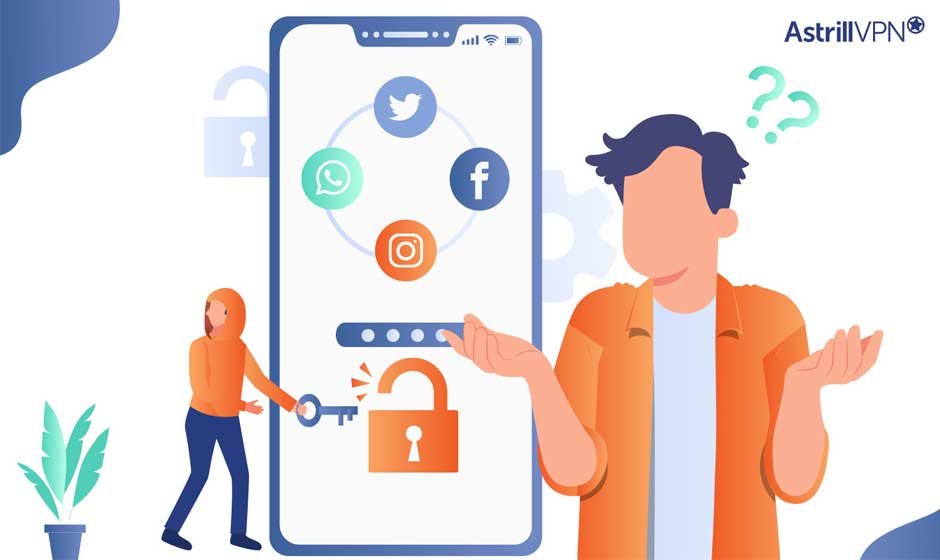Spend enough time online, and you’ll eventually run into an IP block. One day, your connection works fine. The next, you can’t load your favorite platform. It’s frustrating, especially when you don’t know why it happened. Yet in most cases, these blocks follow a clear logic.
Platforms aim to protect their systems from abuse; you just happened to get caught in the crossfire. So, let’s break it down and look at why social media platforms block IPs and what steps can keep you out of their line of fire.
Too Many Lightning-Fast Requests
Social media platforms, like all large systems, monitor incoming traffic for suspicious behavior. When a single IP sends dozens of requests in seconds, whether for logins, page loads, or API calls, systems flag that activity as abnormal. It resembles bot behavior.
Once flagged, they throttle or block the IP entirely. This often catches people running automation tools, but even users with poor internet connections who refresh repeatedly might trip the same wire.
Avoid this by pacing your activity using official apps or browsers. If you run tools that interact with the platform, tweak their intervals. Never allow them to behave like machines, even if they are machines.
Unusual Login Locations
If you access your account from London in the morning but log in from Auckland minutes later, the system assumes something is off. It might not be wrong, as someone could have stolen your credentials. To limit risk, the platform temporarily locks the account or bans the IP.
Using VPNs or proxies without consistency creates similar problems. The system has no way to know you just like privacy, only seeing unpredictable behavior.
Stick to one region when using location-masking tools, and if you must switch, log out first and clear your cookies. That helps the platform interpret the change as intentional rather than suspicious.
Shared IPs
Not everyone with your IP uses the internet for good. If you’re on a shared network or using a proxy, someone else might have triggered a ban. Many cheap or free proxies fall into this trap. They cram hundreds of users onto the same few IP addresses. If one spammer abuses Instagram or TikTok, everyone on that IP feels the fallout.
This highlights the importance of choosing tools with care. You do not need the most expensive solution, but you should understand who you’re sharing space with.
Scraping and Automation Tools
Some people run bots to collect data from social platforms. They might scrape profiles, monitor hashtags, or collect contact information. Others automate follows, likes, or messages to grow accounts. Platforms notice, improving their defenses constantly. While the tools evolve too, many operate with brute force.
These actions generate patterns of predictable timing, regular intervals, and identical headers. Machine learning catches that. Once it does, your IP loses access, and you might also lose the account tied to it.
If you must collect data or scale tasks, use APIs where possible. When platforms offer official access points, use them while respecting rate limits, working within boundaries, not around them.
Content Violations and Community Reports
Sometimes blocks result from what you post rather than how you post it. Repeatedly sharing the same link, using banned hashtags, or uploading copyrighted material can flag you as a repeat offender. If several users report you, that speeds things up.
An IP-level block often follows when a platform sees the same pattern coming from multiple accounts using the same IP. This signals coordinated behavior. Even if the intent was innocent, the system has no way to verify that in real time.
Spread your activity, use different networks if you manage several accounts, and pause before you repost the same thing over and over. Algorithms do not understand nuance, only patterns.
Some Blocks Have Nothing to Do With You
Content delivery networks and cloud platforms sometimes make sweeping decisions. If a provider like Cloudflare sees abnormal traffic from an entire subnet, they might block it all. These decisions might not involve the social media platform directly; you just inherit the problem.
In these cases, contacting your ISP or switching to a different network helps, so does checking whether others reported similar issues online. If you suspect an IP ban, you can use free tools to confirm it. If it’s your IG account and you need to learn more about Instagram-specific bans, check for more info here.
In Closing
IP blocks stem from a system trying to protect itself from abuse, one that does not think like a person. It does not weigh intent or context. All it sees are speed, location, volume, and pattern. When those things stray outside its thresholds, it reacts.
To avoid that reaction, blend in. Be active without being mechanical, cautious without appearing evasive, and always remember that every action on the internet leaves a trace. Just make sure yours doesn’t look like something the system was trained to stop.










